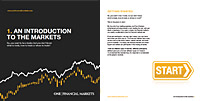

Oil up as bulls push back against another big U.S. crude build
By Barani Krishnan
Investing.com -- Oil prices settled up about 1% Thursday, recouping losses from the previous session, as bulls in the space bet on falling U.S. refinery runs to lead to an imminent tightening in fuel supply, even as latest weekly data showed big builds in both crude oil and gasoline.
February, the most-actively traded contract on New York West Texas Intermediate, or WTI, crude settled up 85 cents, or 1.1%, at $80.33 per barrel. February WTI earlier hit an intraday high of $81.48. Meanwhile, March WTI, which Investing.com is already using as the front-month marker for U.S. crude, settled up 81 cents, or 1%, at $80.61.
London-traded Brent crude for March delivery settled up $1.18, or 1.4%, at $86.16, after a session peak at $86.84.
Oil prices ran up despite the Energy Information Administration, or EIA, saying in its Weekly Petroleum Status Report that U.S. crude inventories rose by 8.408 million barrels for the week ended Jan. 13, versus market expectations for a draw of 593,000 barrels.
In the previous week to Jan. 6, the statistical arm of the U.S. Energy Department reported a crude build of 18.962M barrels. In total, the EIA has reported almost 30M barrels in crude builds over the past four weeks.
On the gasoline inventory front, the EIA reported a rise of 3.483M barrels versus expectations for a build of 2.529M and against the previous week's growth of 4.114M. Gasoline is America's number one automotive fuel.
The only real bullish number in the weekly dataset was that of distillate stockpiles. The EIA cited a drop of 1.939M barrels for this, versus the forecast build of 122,000 barrels and against the previous week's slide of 1.069M barrels. Distillates are refined into heating diesel, diesel for trucks, buses, trains and ships and fuel for jets,
U.S. refineries operated at 85.3% of their capacity last week, the EIA said, versus the 90%-95% range typical for this time.
“There’s this notion that fuel stockpiles, including that of gasoline, will fall appreciably in the coming weeks and that’s what oil bulls are holding on to as their idea of ‘demand’,” John Kilduff, partner at New York energy hedge fund Again Capital, said in a text message to Investing.com. "But, of course, slower refinery runs means a continuous buildup in crude. That's being conveniently ignored here."
“On a broader scale, aside from the ‘China reopening story’, we’ve had a deluge of optimistic forecasts of late on oil, that has come from the OPEC to IEA and that’s helping the bull case in oil. What we need is more real hard numbers from January onwards on demand from China and other sources.”
The IEA, or International Energy Agency, said on Wednesday that global oil demand could reach an all-time high in 2023 as China rolls back lockdowns and restrictions related to its tough COVID-zero policy.
In a more material development, the weekly inventory report showed that the Biden administration has stopped drawing crude oil from the U.S. Strategic Petroleum Reserve, or SPR, as it attempts to rebuild a reserve it pulled more than 200M barrels to keep fuel prices low for Americans.
The EIA reported an SPR crude balance of 371.6M barrels at the end of the Jan. 13 week, unchanged from the previous week to Jan. 6. The zero SPR draw for last week closes the chapter on some 220M barrels taken from the emergency oil reserve since November 2021 by the Biden administration to provide more crude to the marketplace and bring pump prices of gasoline down.
Prior to those draws, SPR inventories stood at just under 600M barrels. At their present level of just above 370M, the reserve’s stockpiles are at their lowest since December 1983, the EIA said.
The crude releases from the SPR, along with other global market developments, added significantly to international oil supplies over the past year. At one time, the EIA reported weekly draws of as much as 8M barrels from the reserve. Those additional supplies helped slash crude prices from a high of more than $130 a barrel in early March, right after the outbreak of fighting in Ukraine and the subsequent sanctions on Russian crude, to below $90 a barrel by August.
The strategy worked for the administration: pump prices of gasoline fell to below $3 a gallon at some U.S. pumps by late last year from a mid-June record high of $5 as the SPR draws flooded the domestic marketplace for crude. Gasoline at U.S. pumps now average $3.38 a gallon, the American Automobile Association said on its website Thursday.
Last week’s zero SPR draw came after the administration announced late last year that it was winding down its dependence on the reserve and preparing to add to its inventory.
The administration is negotiating purchases with U.S. energy firms to refill the reserve, starting with a base offer of $70 per barrel. With WTI at just above $81 a barrel on Thursday, sellers will likely be seeking more, resulting in a longer lag to replenish the reserve.
Begin trading today! Create an account by completing our form
Privacy Notice
At One Financial Markets we are committed to safeguarding your privacy.
Please see our Privacy Policy for details about what information is collected from you and why it is collected. We do not sell your information or use it other than as described in the Policy.
Please note that it is in our legitimate business interest to send you certain marketing emails from time to time. However, if you would prefer not to receive these you can opt-out by ticking the box below.
Alternatively, you can use the unsubscribe link at the bottom of the Demo account confirmation email or any subsequent emails we send.
By completing the form and downloading the platform you agree with the use of your personal information as detailed in the Policy.






